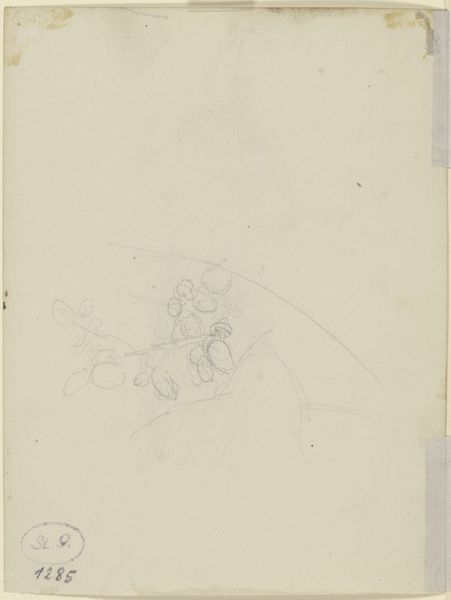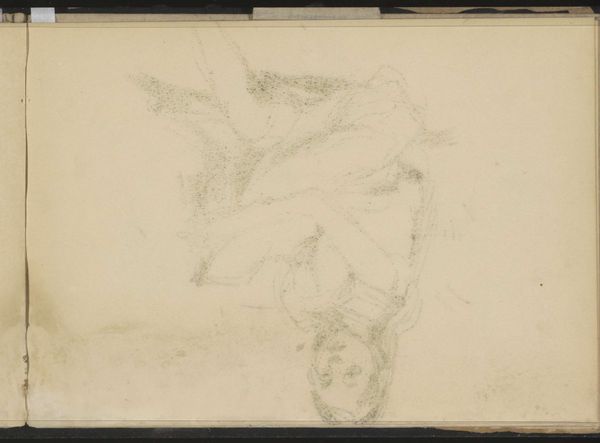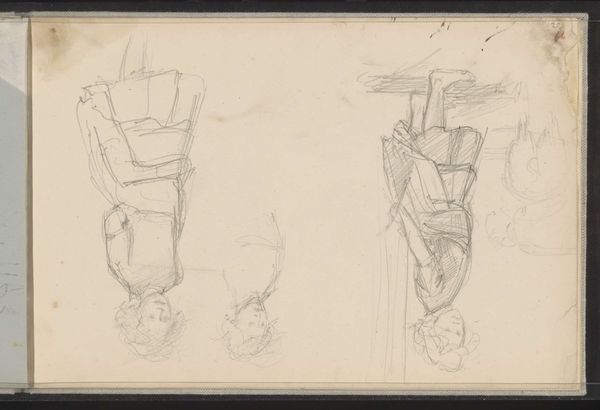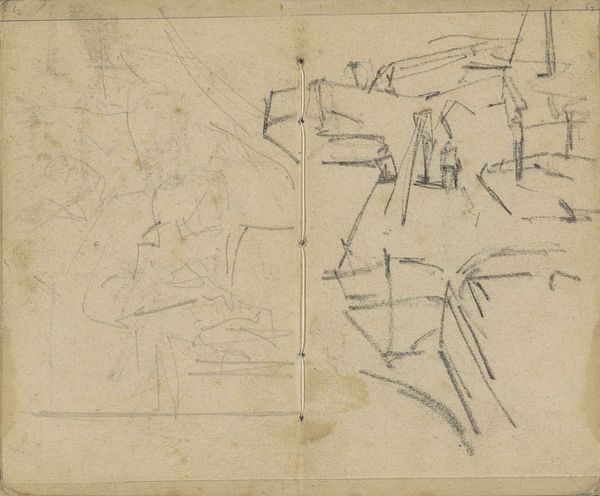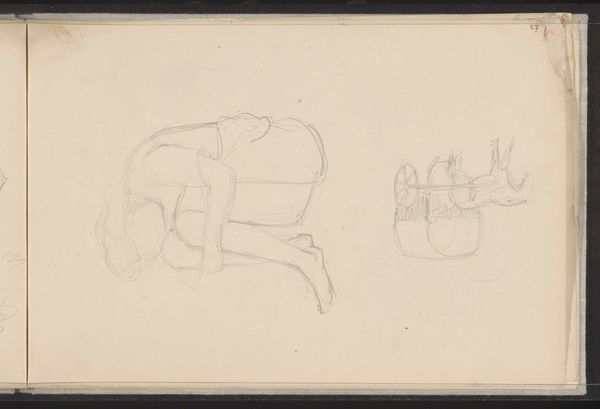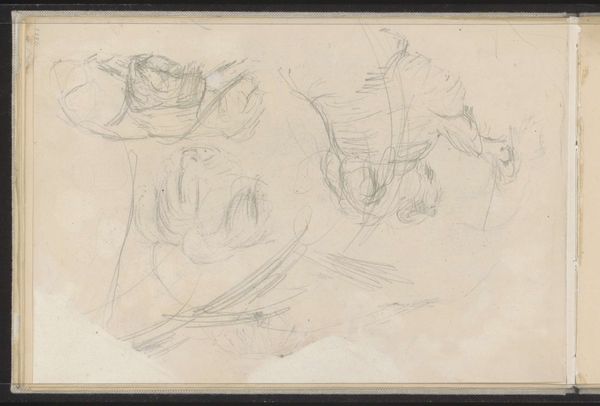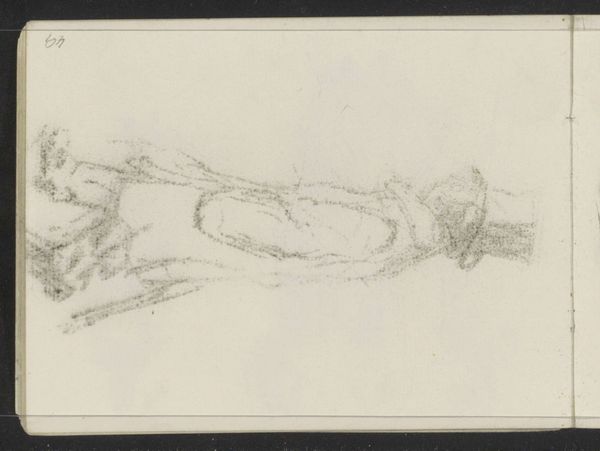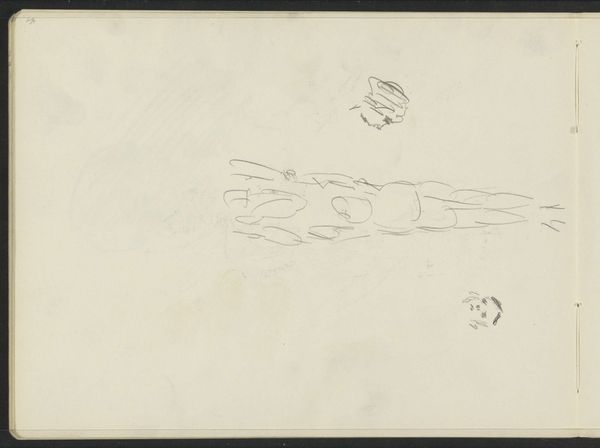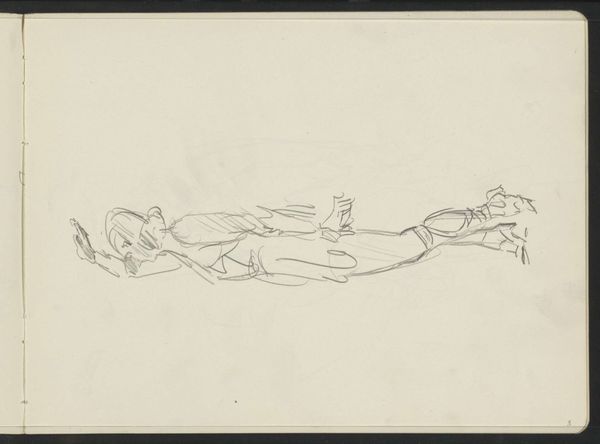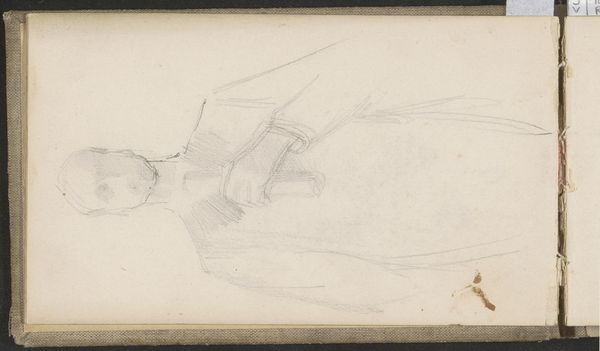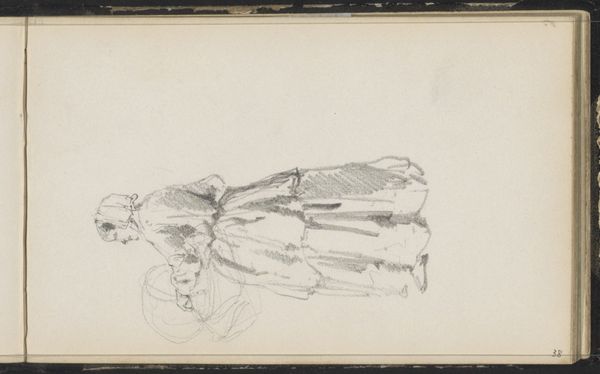
drawing, paper, pencil
#
portrait
#
drawing
#
amateur sketch
#
toned paper
#
light pencil work
#
mother
#
impressionism
#
pen sketch
#
incomplete sketchy
#
figuration
#
paper
#
personal sketchbook
#
ink drawing experimentation
#
pen-ink sketch
#
pencil
#
sketchbook drawing
#
genre-painting
#
sketchbook art
Copyright: Rijks Museum: Open Domain
Editor: This is a sketch by Jozef Israëls, dating somewhere between 1834 and 1911, titled "Moeder die een kind op haar schoot voorleest," or "Mother reading to a child in her lap." It looks like it's pencil on paper and the lines are very light, almost like a preliminary sketch. What’s striking is how many versions of this scene are layered on top of each other, like the artist was searching for the right composition. What do you make of it? Curator: It's interesting you notice the repetitions. It speaks to the evolving role of genre painting during that period. The proliferation of sketches suggests a societal shift toward valuing the process of artmaking, not just the finished, polished product. The sketchbook becomes a space of both intimacy and of potential public display. It reveals the artist’s creative struggles in ways that formally exhibited works often concealed. Editor: So, you're saying the act of sketching itself gained importance? Curator: Precisely. Consider the burgeoning middle class during this era, with their own social concerns. Images of domesticity became popular. Artists started showing, through these rougher sketches, a connection with those viewers, documenting everyday life and family values which becomes intertwined with national identity and collective memory. Do you see that in this work? How does it make you feel? Editor: It does feel intimate, but also almost like spying on someone's private moment. I hadn’t thought about how displaying these "behind-the-scenes" glimpses changes our perception of both the art and the artist. Curator: Exactly! The "politics of imagery" isn’t limited to grand historical paintings; it extends to these seemingly simple sketches as well. Museums like the Rijksmuseum preserve and present these sketches, shaping our understanding of both art history and social history. Editor: I’ll definitely look at sketches differently now, seeing them as more than just practice. Thanks for that perspective. Curator: And I’ll be thinking more about how the private becomes public through the institutional framework of art history. A very worthwhile exchange!
Comments
No comments
Be the first to comment and join the conversation on the ultimate creative platform.
